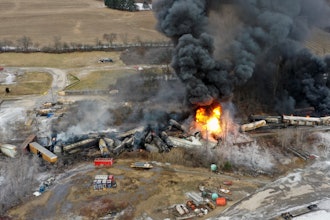
In the wake of California's Green Chemistry Law and the associated regulations that will become public later this year, Chem.Info spoke with Michael Kirschner about what the regulation will mean for manufacturers and what they can be doing to prepare now.

Is there any indication yet of what the Priority Products will be? Will they go after the ‘worst offender’ chemicals?
Nearly anything any person or business can buy, with a few exceptions, is conceivably within the scope of the regulation, but as of yet there is no indication from the DTSC. The question of whether to do the worst first or take some other approach has engendered a great deal of discussion. There are a couple of crucial factors to consider, one being that a regulation like this has never been implemented in the United States and no one, including the DTSC, has experience with the alternative assessment process that will be required. The other issue is that the DTSC has no mechanism for funding the enforcement of this regulation, limiting what the DTSC can realistically do. The general feeling from the panel, myself included, is that pursuing solvable problems, such as those where some manufacturers have already found a way around the use of a candidate chemical, will be a more effective approach. It is important that the regulation creates an environment where it, and the alternative assessment process, can be evaluated and changed if practical problems arise, and that manufacturers can work within.
With only a few months left until the five Priority Products are chosen, what should or could companies being doing to prepare now?
Ideally, companies would start their own versions of the alternative assessment process now. The first step would be to review their products for the presence of the prioritized “initial candidate chemicals” and start assessing how and whether they could replace those substances in their products. Manufacturers will have to consider the human health and environmental performance concerns, throughout the life cycle of a chemical, of both the candidate chemicals they use now and the potential alternatives in order to determine what their best option is for removing, replacing or redesigning the problem chemical.
The challenge is that not many manufacturers have experience making this kind of transition and because the DTSC has limited resources and expertise they will not be able to aide companies in making these changes. It will be largely up to the manufacturers to come up with effective strategies to prepare for and implement the regulation. I expect that consultants, or more likely teams of consultants so that they can cover the wide breadth of requirements necessary, will be utilized to help manufacturers transition away from the candidate chemicals. I also believe that we will see manufacturers teaming up and sharing expertise to solve chemical of concern issues in priority products that they do not feel are a competitive threat.
Once the five products are chosen, how long will it take manufacturers to adapt to the new regulations – provided they don’t simply choose to remove their products from the California market?
The regulation provides timelines so manufacturers will have to comply with that. One of the biggest challenges will be awareness. How do you ensure – as a manufacturer – that you are actually aware of new regulatory requirements? Many companies have found themselves waking up one day to find that their products were covered by – and not compliant with – a regulation that had been in place in a market for quite some time. Budgeting after the fact is always challenging. It is more cost effective and efficient for companies to proactively understand pending or likely regulation. Being strictly in reactive mode is expensive stressful, and can degrade a company’s competitive position.
What kind of financial impact are these changes expected to make on the manufacturers?
It is too hard to say until we know what the Priority Products are (and part of the process will be for DTSC to produce a financial impact statement). Any time you have to go back to the drawing board for an on-the-market product and perform re-engineering on it – usually on an unplanned basis – you don’t have a budget in place to do it so the cost has to be justified outside the budget cycle. This can be difficult and can result in a great deal of management scrutiny, i.e. interrogations like “How did YOU let this happen?” It is best, therefore, to put pre-emptive systems in place and review chemicals in the product development stage before your product hits the market.
Ultimately the regulation is not meant to punish manufacturers, it needs to enable real changes, not only to existing chemicals, but more so in a preventative fashion so that California can avoid these kinds of issues moving forward.
Michael Kirschner is a Principal Consultant for ENVIRON, a company that works with clients to help resolve their most demanding environmental and human health issues. Clients around the world benefit from their ability to bring clarity to issues at the intersection of science, business and policy.























